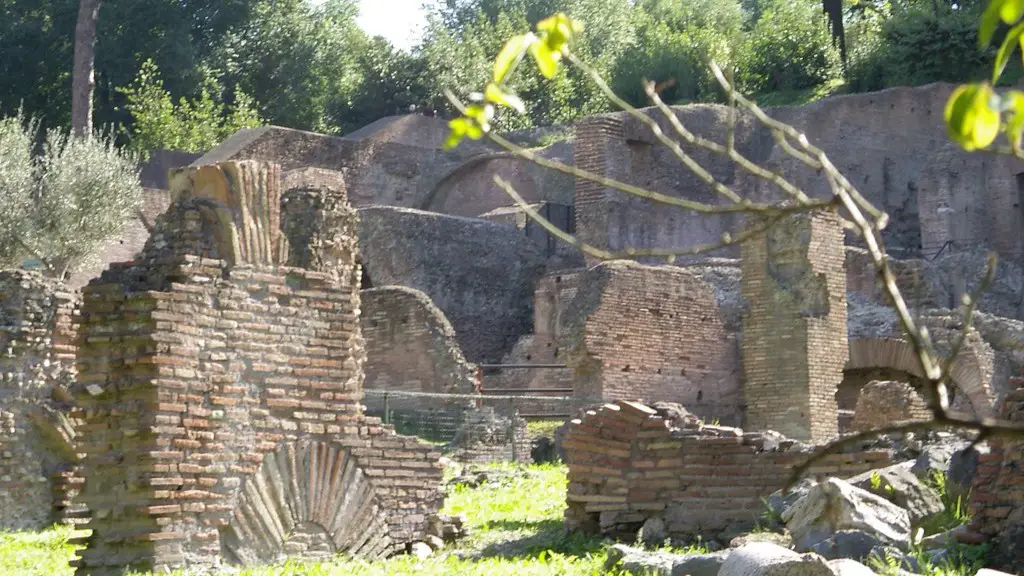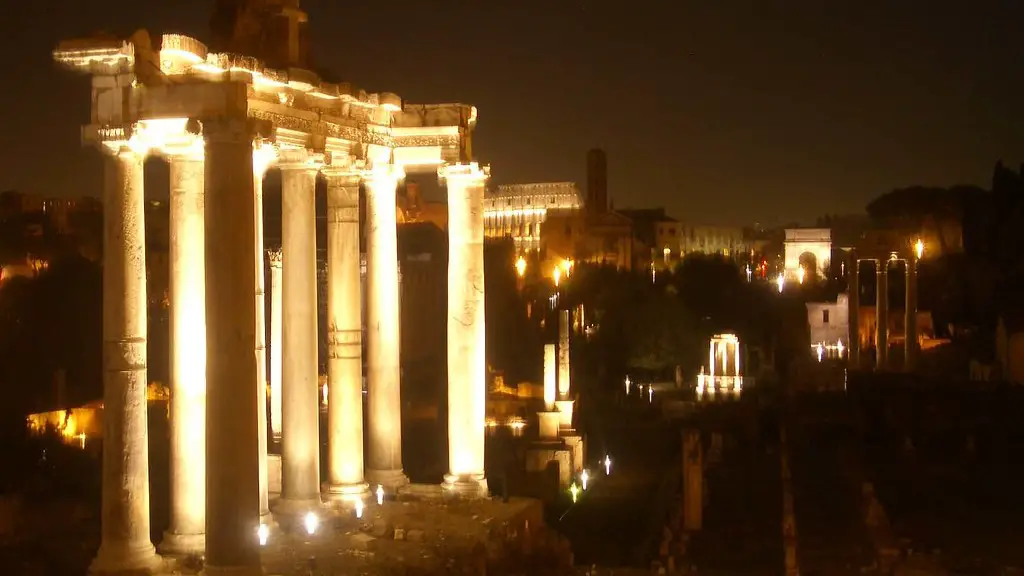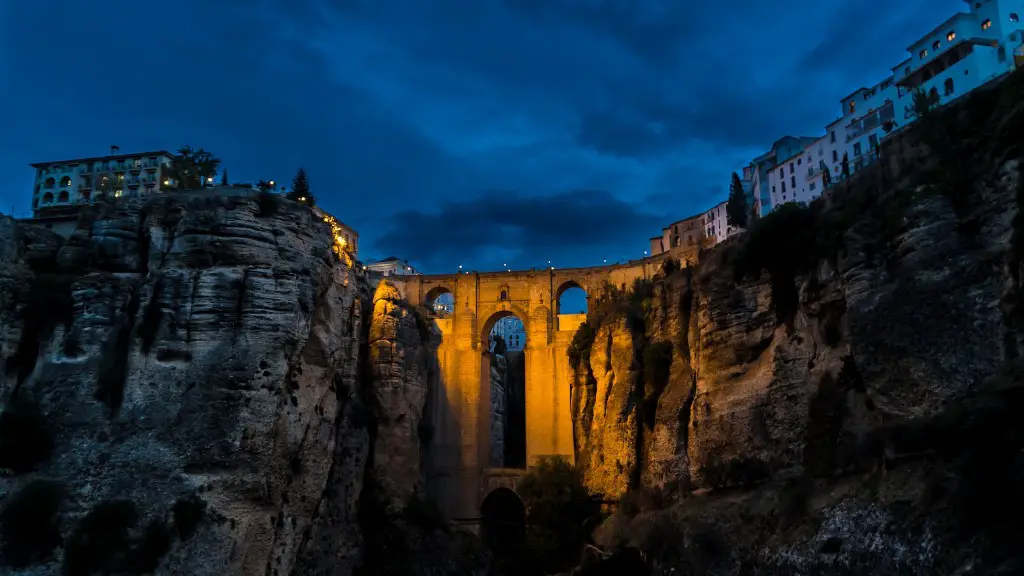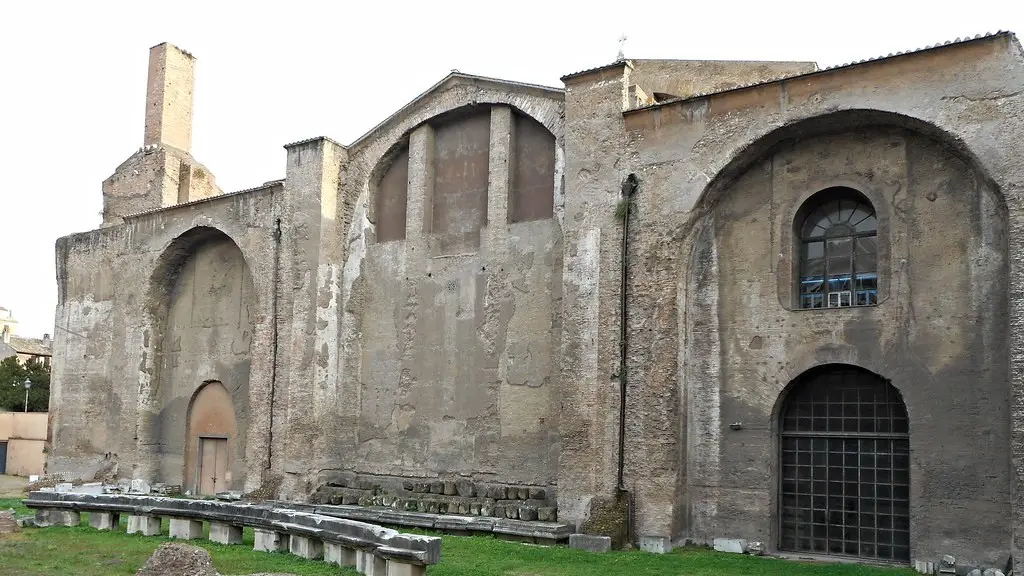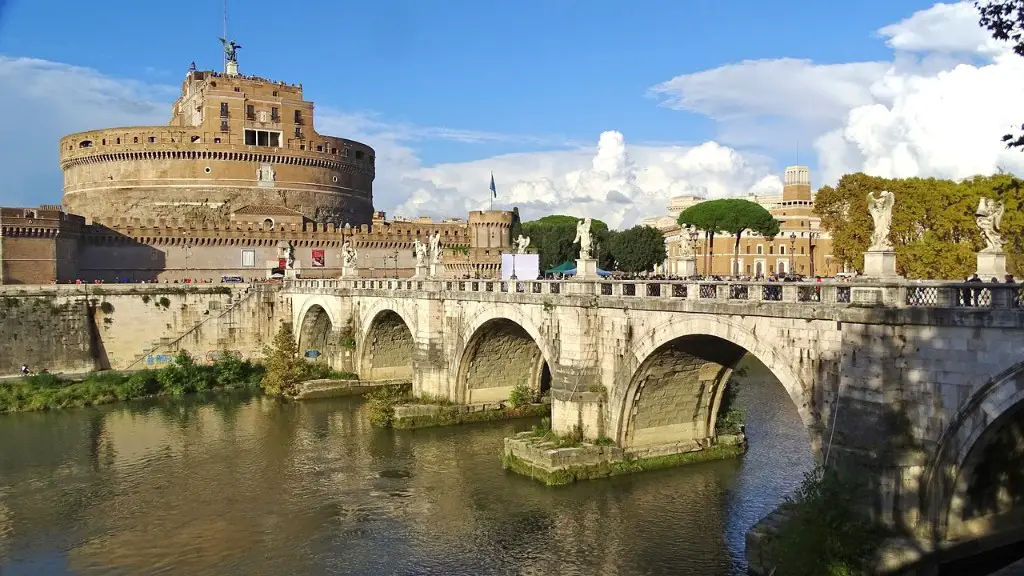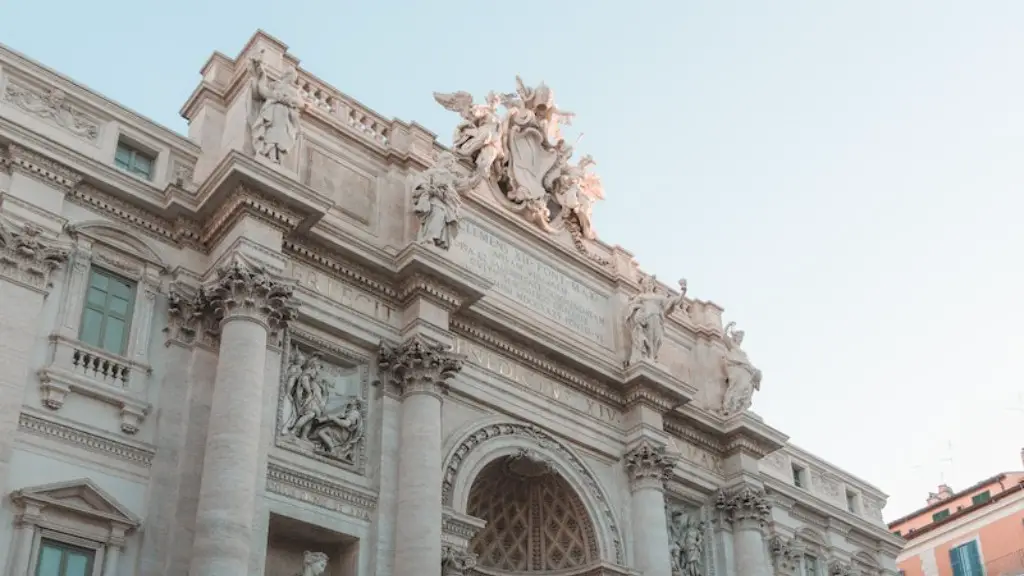The ancient Roman Colosseum has been an iconic symbol of the city of Rome since its construction over 2000 years ago. Built between AD 70 and 80, the Roman Colosseum was the largest amphitheatre ever built in the Roman Empire and one of the most iconic structures from the ancient world. For centuries, this site of spectator entertainment and sports was used for huge gladiatorial contests, public spectacles, animal hunts and even public executions.
The Colosseum was a product of immense engineering prowess. Constructed mainly from concrete, stone and wood, the elliptical structure could accommodate as many as 50,000 spectators who would flock to watch combat and showmanship from the finest gladiators and animals from all over the Empire. It was designed to maximize the view of the crowds, so it was divided into three tiers divided by a network of stairways – the emperor and his family was placed in the highest tier, while the most prominent members of Roman society occupied the second and third tiers. The ground floor was designated for the lower-class spectators.
The Roman Colosseum staged some of the most extravagant and gruelling battles between gladiators. Gladiators were chosen by the emperor, and when not in a fight, trained in a ludus – a kind of gladiator school. Gladiators were a favourite of the Roman people, and fights at the Colosseum drew in members of every class, from commoners to the mighty Caesars. Gladiatorial contests weren’t the only attraction, however – they were accompanied by wild and exotic animal fights, performing arts and re-enactments of violent scenes taken right out of Roman history.
In addition to horrific gladiatorial fights, the Colosseum was also the site of many public execution and punishments. Criminals were thrown to the wild beasts and unlucky victims were fed to lions and other ferocious animals. But the Colosseum was also home to some of the more noble spectacle such as mock naval battles, elaborate processions and even theatrical shows.
The heyday of the Colosseum was in the first two centuries AD, when it was the preferred playground for the elites of Rome and a central part of the Empire’s culture. By the 5th century, however, its walls had become a storage room for animals and the venue was used for less illustrious events. In its later history, the crumbling Colosseum was used as a strategic point for a number of battles and even a quarry for stone and marble used in the building of churches and Renaissance structures. It was only in the 19th century that it was restored and preserved in its original form.
Today, the Colosseum stands as a testament to the grandeur of the Roman Empire and its power over the world. It is an icon of ‘circus’ culture, and a reminder of the cruelty and violence of the past. Yet it still provides modern day spectators with an insight into the extraordinary history and culture of the Roman civilization.
Political Aspects
The Colosseum was once the scene of politics, power and violence. The grand spectacles served both as a way for the Roman Emperor to gain popularity among the people and to manipulate politics. It was a way for the emperor to demonstrate his power, to give or withhold from the citizenry whatever he desired, including mercy or justice. The different sections of seating arranged in the Colosseum gave the elite a privileged location and enabled the Emperor to keep an eye on his subjects. It also allowed the emperor to reward favoured people with a ‘privileged view’, thus gaining loyalty and respect for himself.
The Colosseum was also a place where Roman laws were displayed and enforced. Emperors such as Domitian and Titus used the Colosseum to demonstrate their power and influence. Through grand spectacles, they could show off their wealth and power as well as their authority as lawgivers. In this way, they sought to maintain social order and to instill fear in their subjects. This power structure allowed them to control their citizens and ensure their obedience.
The games and shows that took place at the Colosseum were mostly political. They served to show the might of the Roman state and its ability to organize grand spectacles. This was used to frighten its enemies and to instill loyalty among its citizens. The Colosseum was thus a way of demonstrating the power of the state and the sureness of its laws.
Religious Aspects
In ancient Rome, the Colosseum was the site of both religious spectacle and sacrifice. Every event held at the Colosseum was accompanied by prayers and sacrifices to the gods. The gods received offerings and thanks from both the gladiators and the spectators, and their approval was sought before the games began. This was also true of the animal hunts. Pictures of the gods were prominently displayed in the Colosseum, as a reminder of their presence and as encouragement to the gladiators. Religion was also a central feature of drama and other forms of entertainment presented at the Colosseum.
The gods were not the only religious figures at the Colosseum. During some spectacles, the emperor himself could take the role of a god and be venerated by the people. The imperial family was also present and they could be seen in specific locations, like the imperial box. The emperor’s presence was designed to show off the divine legitimacy of his rule. Religion was also used to show the greatness of Rome. In some events, there were even references to the ‘divinity’ of Rome’s victory and the might of its gods.
The Colosseum was also a venue for religious ceremonies and sacrifices. The emperors would make offerings to the gods in order to gain their blessing and seek their protection. Other religious rites would be performed to propitiate the gods and to seek their favour. Consequently, the Colosseum was not only a site of communal entertainment, but also of religious devotion.
Social Aspects
The Colosseum had a strong social dimension to it. Beyond being a seat of politics, power and violence, it was a place where ordinary citizens could come and be entertained and socialise. It was, in many ways, a public space for the people.Open to all citizens across all classes, the Colosseum was a place for people from all walks of life to come together and relax.
The spectacles, too, were designed to evoke feelings of social solidarity. Under the patronage of the emperor, everyone in the audience was united in the shared experience of the event. Participation in the games, by both spectators and participants, helped to foster a sense of community, and even bring together those who normally wouldn’t mix. In this way, the Colosseum was a place where people could come together and share in the grand spectacle of Rome.
The Colosseum also had social implications in terms of the class structure. Elite members of society were placed in the highest tiers, while the lower classes were relegated to the lowest sections of the amphitheatre. This served to reinforce the existing social structure and to keep the classes at their respective places. In this way, the Colosseum was a symbol of the rigid class structure of Roman society.
Cultural Aspects
The Colosseum was a place of great artistic expression and a source of inspiration for many Roman citizens. Beyond being a venue for sporting events, it was also a stage for public displays of art and culture.
Rome excelled in producing great works of art, and it was only fitting that the Colosseum was a place to showcase them. Through their elaborate decoration and grand architecture, the Roman emperors sought to bring out the best of Roman culture.
The Colosseum was also a place where Roman citizens could educate themselves. Events could be used to teach people about their culture and history. Through dramatic recreations of events from Roman mythology and reenactments of battles, the people were taught about their own past. Thus, the Colosseum served as a place of education as well as entertainment.
The Colosseum was also a place where the Roman citizens could express their opinions. Through the events performed, they could express their support or disapproval of the civic or religious leadership. This kind of political expression was essential to creating a strong sense of civic identity and duty.
Impacts
The Colosseum had a lasting impact on the Roman Empire, both politically and culturally. It served as an expression of Roman power, a witness to its brutal fights, and a reminder of its incredible history. It showed the world the might and grandeur of the Roman Empire and was a source of inspiration for art and culture.
The Colosseum also left a deep impression on its people. Through the events and spectacles held in it, the people of Rome were given a reminder of their great heritage and were instilled with a strong sense of civic duty. They were shown the power and legitimacy of the Roman state and were united in a shared experience. In this way, the Colosseum was both a source of entertainment and a platform for teachings about Roman history and culture.
The Colosseum remains an important part of Roman history and its legacy is still reflected in modern society today. From simulations of battles in video games to the spectacle of modern sports stadiums, the Colosseum has been an enduring influence on the way people understand and experience entertainment. Its grandeur, legacy and lasting impact will continue to define it as one of the greatest spectacles in human history.
